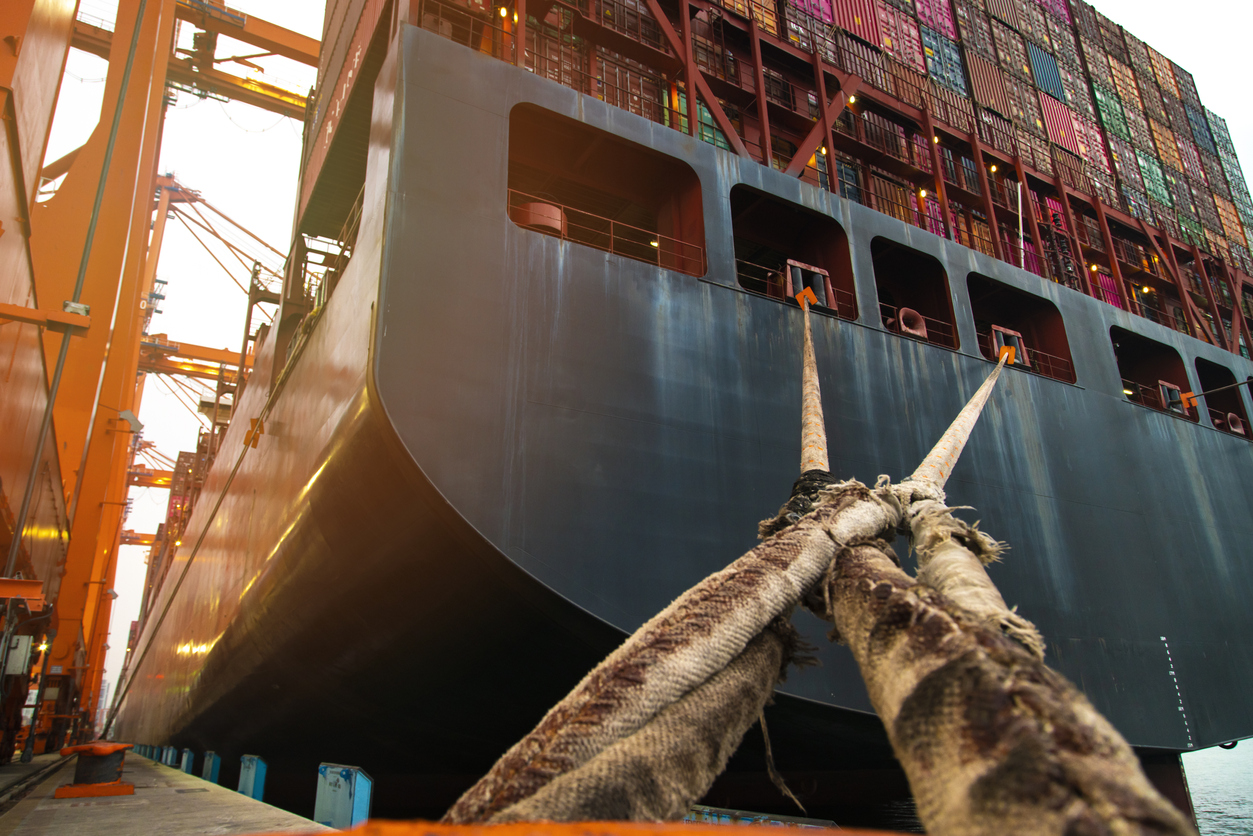
Critical Maintenance for Mooring Equipment
March 9, 2021
The commercial shipping industry is responsible for transporting millions of tons of goods from manufacturing and production centers to end users each year. As such, it is a critical aspect of global economies. To ensure safe loading and unloading of cargoes, mooring equipment is an essential component. Just like the protections of commercial marine insurance in managing risks for shippers, attending to mooring equipment maintenance can reduce or eliminate common hazards. Without proper maintenance, mooring operations can be hampered, potentially causing property damage or loss and injuries to personnel.
Mooring Equipment: The Basics
Mooring is the operation by which a ship is affixed to a dock, platform, or port berth. The mooring equipment used in mooring operations varies by the type of ship and the facility it is loading from or unloading to. Typically, mooring is accomplished using anchors and lines, but may also include equipment like:
- Guide rollers
- Capstan winches/winch drums
- Deckstands
- Fairleads
- Windlasses
- Bollards
Each part of the mooring equipment must be maintained to ensure safe use. A failure at any part of the mooring operation can result in significant property damage, injury, or death of crewmembers. Maintaining mooring equipment is only one part of a comprehensive risk management strategy for shipboard operations; commercial marine insurance and safety-oriented practices minimize the risk exposures to ships, their cargos, and their employees.
Best Practices for Mooring Equipment Maintenance and Care
Ships arriving in port to take on a cargo load or to discharge tons of materials rely on safe mooring to ensure smooth operations. The equipment used to conduct mooring is a critical component of the process. Best practices for maintenance of mooring equipment include:
Pre-mooring inspections – before any docking or mooring takes place, crewmembers must check all equipment for proper operation. With these inspections, damaged, missing, or inoperable parts can be repaired or replaced before an incident were to occur. During inspections, all controls, linkages, and operating systems must be evaluated to ensure safe mooring.
Routine care and maintenance – smart ship owners know that preventative maintenance saves money in the long run. It can also help to protect the safety of crewmembers and vessels. Preventative maintenance for mooring equipment includes lubricating all moving parts (rollers, drums, and fairleads) with marine grease. Replacement of damaged components is another part of routine maintenance. All systems should be moved to ensure proper operation once lubrication is completed.
Brake Liners and Drums – on most mooring winches and windlasses, braking systems control the payout or retrieval of lines. Over time, these components can wear and must be replaced. Corrosion and moisture can also damage these parts. Scheduling routine replacement of critical braking system parts can supplement the protections of commercial marine insurance by preventing shipboard accidents.
Gear oil and hydraulic fluids – the oils used to operate machinery may become contaminated over time, particularly during voyages in heavy seas. Contaminated oils often take on a cloudy, whitish appearance and must be drained and replaced to keep mooring equipment in top condition. Crewmembers must use the right oil or fluid as recommended by the equipment manufacturers for each application.
Lines and cables – during inspections, visually ensure that all mooring lines and cables are intact. These parts experience tremendous strain during operation, and a kinked or frayed line can separate without warning. Damaged or frayed lines must be replaced before mooring operations can take place.
Clear all walkways – during mooring, crew chiefs must ensure that unnecessary personnel are off the deck and that all walkways and passageways are clear. Walkways should be kept free of oils or residues; anti-slip coatings may be applied to add traction. Any obstructions that may interfere with mooring equipment must be removed. For the crewmembers that must remain on deck during mooring, safety is a priority.
Commercial marine insurance is a foundational element of risk management in the shipping industry. Still, it must be supplemented with safety-oriented shipboard practices. Because the mooring operation is so critical to cargo handling, inspection and maintenance of mooring equipment helps to protect vessels, cargos, and personnel from harm.
About Merrimac Marine Insurance
At Merrimac Marine, we are dedicated to providing insurance for the marine industry to protect your clients’ business and assets. For more information about our products and programs, contact our specialists today at (800) 681-1998.
